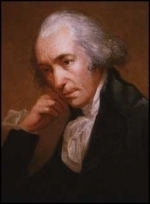- BY Admin
- POSTED IN Articles
- WITH 0 COMMENTS
- PERMALINK
- STANDARD POST TYPE

James Watt (born January 19 1736 – died August 19 1819) was a Scottish mathematician and engineer who worked in a period of ferment of the industrial revolution, as one who has made a significant improvement in functioning steam machine Thomas Newcomen’s, with the invention of the steam condensing chamber separately.
Was born in the area of Greenock in Scotland. Studies it has done in London, England, and work from the manufacturer of mathematical tools (1754). A return to their native lands, in Glasgow, Scotland. It was the manufacturer of mathematical tools used by the University of Glasgow. This was offered to repair a steam car, where he sprung the idea of improving it, as occurred “separate room for condensation of steam” (1769) and “the car’s speed regulator steam” (1788).
Then moved to England at Birmingham. Here is part of a club, Lunar Society (roughly translated fancy Society), which – despite the misleading name – was actually formed a scientific club of inventors. Many of his works are originals from “Birmingham Cultural Library (Central Library in Birmingham).
James Watt, along with a British industrialist, Matthew Boulton, fail to establish a manufacturing enterprise which is called Watt’s steam machine, improved (1774). Here you do, along with another Scottish inventor William Murdoch, a gear for converting vertical motion into rotational motion (1781). Subsequently, he developed a dual-action machine (1782).
The greatest accomplishment is considered to be patent in 1784 a steam locomotive.
Watts is the one who brought the unit called horsepower, to compare different machines steam powers of the time and was then equivalent to lifting 550 pounds in one seconds, or equivalent to 745.7 watts, the unit measure of power in the international system.
His name is linked also Watt’s name as a measure of electrical power.
James Watt was born in the Scottish town of Greenock, in the family of a carpenter. In school they interested in physics and mathematics, to other objects not having too brilliant results. Wished to study at university, but the family could not allow. After many hesitations, she decided to learn Precision, items that taking into account the precarious state of his health-would not be exhausted. In 1754 he began learning at Glasgow optics and mechanics. After a year of school left for a maker of mathematical instruments, Morgan, in London, where he learned many interesting things and highlight the precision and skill with which fulfill all the tasks I returned. In 1757 he obtained a place at the University of Glasgow as a mechanic. He found there a well stocked cabinet of physical conditions for the study and performing experience. Steam car idea began to worry him in Watts after the first two years spent at University, at first without results. When to instruct but to repair the car model Newcomen’s steam, not only for repair, but it and tried to improve it. He noted that the boiler steam car arrived only a few movements of the piston, after the car had to wait until the new form of steam in the boiler. Focused on this issue for several weeks in early 1765 solved the problem: steam not be formed directly in the cylinder, but separately, on another ship bound for steam cylinder. Thus Watt invented the condenser and immediately thereafter, closing the cylinder at both ends of the valve, double acting steam machine. That’s right, Watts had no idea what you have to overcome huge weight will make up his ideas. During this period was very difficult to find a driver that can run just after the drawing, a relatively complicated device and no cars were not quite accurate processing. Construction of the first models of Watt’s steam machine resulted in a failure. Watt ran out of money and in this situation has accepted financial support of the doctor and industrialist Dr. Roebuck, who called the paper patent and two thirds of the gain. In his 1769 Watt was given, and finally, the patent for the “new way to reduce the consumption of steam and fuel in the car with fire” but the device built according to the patent not worked. The fault was not only imperfection lining of the connections between different parts of the car, but quality of material used. Watts is apart of associate, which give the manufacturer Boulton. In his person Watt his experiences and find support for the invention, soon became his partner in the new car factory steam “Boulton and Watt. Watt worked tirelessly to improve their invention, who caused so many disappointments. In 1775 managed to build the most important part – the steam cylinder, which could really work so that plant to produce steam and first car, after one year, two more. The cars worked well and made sense. The factory was preparing for mass production. But success has influenced human life was modest Watt. He still takes care of his inventions. In 1780 he invented the copying press, two years later he added a steam-engine flywheel and two later a centrifugal governor. His collaborator in 1785, Murdock, built a steam distributor to the cylinder, and, with it, the evolution of the first steam machines that could be used to end. During his lifetime fecundity, James Watt has made many other discoveries and boosted the movement for introducing a new uniform system of weights and measures. For his merits, to the end of his life received many honors. The most important are the fact that he was elected to the French Academy of Sciences, the Royal Society of London, doctor honoris causa of the University of Glasgow and others. Watt was married twice. From first marriage had 5 children, the second 2, who died at an early age. Shortly before his death, was awarded the title of nobility. Watt but refused. He remained faithful to its modest origins and creative work which he loved above all. He died on August 19, 1819, at Heathfield.




